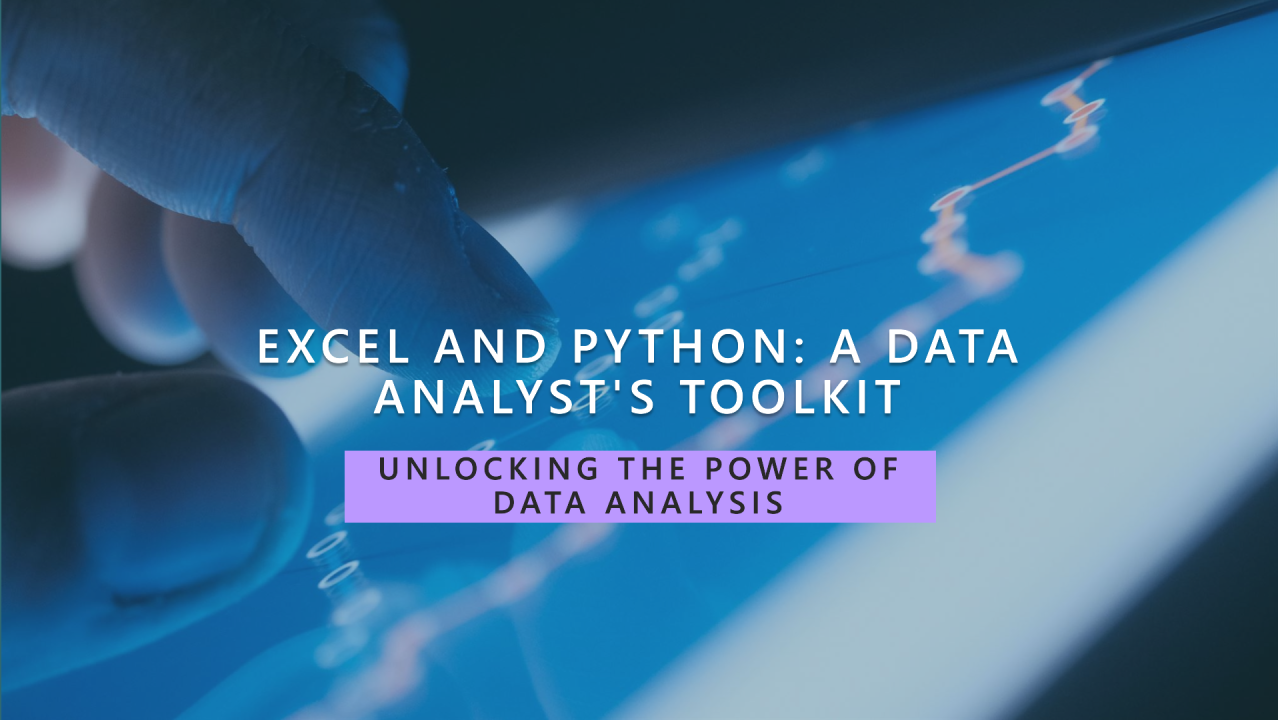
Excel and Python: A Data Analyst’s Toolkit
Kambhampati Sri Ram
Aspiring Business Analyst | Business Analytics | Power BI | SQL | Python | Data Visualization | Excel | DAX | Transforming Data into Actionable Insights | Data Analytics | Statistics | Pivot Tables | Data Mining
In today’s data-driven world, Excel and Python are two indispensable tools for any aspiring or professional data analyst. Both have unique strengths that, when combined, offer a powerful toolkit for managing, analyzing, and visualizing data. But how do these tools complement each other, and which should you use for specific tasks?
In this article, we’ll explore the strengths of Excel and Python, why both are essential in the data analysis field, and how leveraging their capabilities can enhance your data processing workflow.
Why Excel?
Excel has long been the go-to tool for data analysis, and for good reason. Its intuitive interface and versatile functions make it ideal for handling structured data. Here’s why Excel is an essential tool for data analysts:
1.Ease of Use
Excel's user-friendly interface allows you to quickly sort, filter, and format data without a steep learning curve. For those new to data analysis, Excel’s simplicity makes it a great starting point.
2.Powerful Functions and Formulas
Excel offers a vast library of built-in functions for data manipulation, such as VLOOKUP, SUMIF, and pivot tables, enabling you to extract meaningful insights without needing to code.
3.Visualization Capabilities
Excel's charting tools make it easy to create basic graphs, bar charts, and pie charts to visualize trends and patterns in your data.
However, as datasets grow in size and complexity, Excel can become limited. That’s where Python steps in.
领英推荐
Why Python?
While Excel is excellent for smaller datasets, Python excels (pun intended!) at handling large, complex datasets with ease. It’s an open-source programming language that has become increasingly popular among data analysts due to its flexibility and efficiency. Let’s look at Python’s strengths:
1.Handling Large Datasets:- Python’s libraries like Pandas and NumPy can manage large datasets that would slow down or crash Excel. With Python, you can easily manipulate millions of rows of data.
2.Automation:- Python is perfect for automating repetitive tasks. Whether it’s cleaning datasets, generating reports, or even scraping web data, Python can handle it all with just a few lines of code.
3.Advanced Data Analytics:- For complex statistical analysis or machine learning, Python offers libraries like SciPy, Scikit-learn, and TensorFlow, taking your analysis beyond what’s possible with Excel alone.
4.Integration with Other Tools:- Python integrates well with a variety of data tools such as SQL databases, Power BI, and even Excel itself, allowing you to move data across platforms seamlessly.
The Best of Both Worlds: Combining Excel and Python
While Excel and Python are powerful individually, using them together can unlock even more potential in your data analysis workflow.
When to Use Excel vs. Python?
Understanding when to use Excel or Python (or both) depends on the nature of your task.
In the world of data analysis, versatility is key. Mastering both Excel and Python will not only make you more efficient but also open the door to more advanced analytical opportunities. Each tool has its strengths, and knowing when and how to use them in tandem can significantly enhance your data workflows.
Whether you're performing simple data cleaning in Excel or building a machine learning model in Python, this combination is your data analyst’s secret weapon. Start by mastering Excel’s formulas and functions, and gradually add Python to your toolkit. With these tools at your disposal, you’ll be well on your way to data analysis success.
AI Engineer| LLM Specialist| Python Developer|Tech Blogger
4 个月Level up your Excel skills with AI-powered automation! Python & ChatGPT make data management effortless. Stay ahead in the game of analytics. https://www.artificialintelligenceupdate.com/excel-automation-with-python-chatgpt/riju/ #learnmore #AI&U
AI Engineer| LLM Specialist| Python Developer|Tech Blogger
5 个月Unlocking efficiency! Imagine automating your Excel data analytics with @PerplexityAI and Python. No more manual crunching, just seamless insights. https://www.artificialintelligenceupdate.com/excel-data-analytics-automate-with-perplexity-ai-python/riju/ #learnmore #AI&U
AI Engineer| LLM Specialist| Python Developer|Tech Blogger
5 个月Harnessing Excel data analytics just got a game-changer! Perplexity AI & Python automate complex tasks, making your analysis seamless and swift. https://www.artificialintelligenceupdate.com/excel-data-analytics-automate-with-perplexity-ai-python/riju/ #learnmore #AI&U